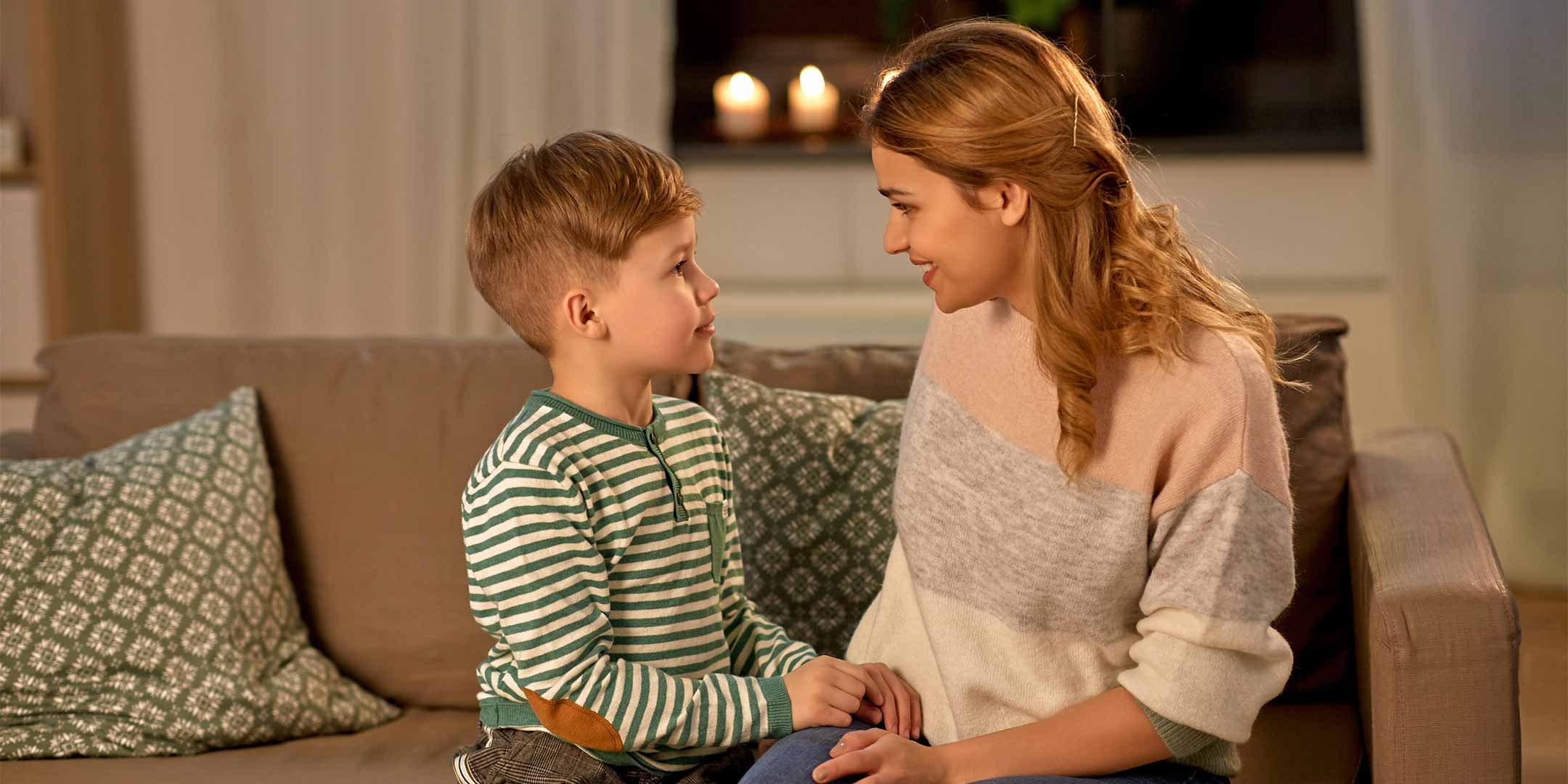The Conscious Discipline Brain State Model reminds us of the brain’s three hierarchical needs: Safety, connection and problem solving. Times of stress and transition often see a spike in regressive behaviors, conflict and power struggles. Any time your family experiences an uptick in these behaviors, go back to the basics of safety and connection.
Problem-solving endeavors like schoolwork and conflict resolution skills will be more successful after you have established safety and connection. The child’s brain must be able to answer both, “Am I safe?” and “Am I loved?” in the affirmative in order to achieve an optimal brain state.
Learn more about the Conscious Discipline Brain State Model in Dr. Becky Bailey’s new webinar.
Brain State Model Basics
The Conscious Discipline Brain State Model is a highly simplified model that helps us understand the complex, integrated function of the human brain in relation to behavior. It demonstrates the hierarchical function of the brain in practical terms.
A Survival State requires safety. It gives us access to our most primal and physical skill set, including fight, flight and hide. Children exhibiting Survival State skills require immediate intervention with calm and assertive communication from adults (no questions, consequences or choices), deep breathing practice, and sometimes physical movement to assist with the dissipation of stress chemicals.
An Emotional State requires connection. It gives us access to verbal “skills” like sass, arguing, yelling, shaming and blaming (and whatever else we were on the receiving end of as children). Children experiencing an Emotional State feel unlovable and often act in unlovable ways, even as they desperately seek evidence of our love. These children require calm reassurance, connecting activities, to be seen without judgment, two positive choices, the opportunity to contribute to others, and composure practice to raise themselves into an Executive State and help prevent them from slipping into a lower Survival State.
An Executive State is the problem-solving state where the magic happens— our wisdom, conflict resolution skills, creativity, learning, flow and intentional responses are seeded here. From an Executive State, we can access all of our social-emotional, critical thinking and analytical skills, and the creative ingenuity that enables us to invent new solutions and learn new skills. Children experiencing an Executive State are ready to learn, problem solve, create, teach, contribute and approach each situation from multiple perspectives.
Assessing and Responding to Children’s Brain States
All behavior is a form of communication. Children’s behaviors will reveal their needs if we are willing to listen.
Children who are withdrawing, having big physical meltdowns, exhibiting regressive behaviors (bed wetting, sleeping and eating disturbances), etc., are signaling that they’re spending a lot of time experiencing a Survival State. They’re asking us to build more safety into their daily routines and procedures. Regular patterns, deep breathing practice and reassuring talk like, “You’re safe. Keep breathing. You can handle this. We’ll get through this together,” become our primary focus.
Children who exhibit behaviors including being unusually controlling, short-tempered, argumentative, sassy, etc., are revealing that they’re experiencing an Emotional State. They’re asking us to connect with them in meaningful ways. Authentic connection that includes eye contact, touch, presence and a playful situation becomes our primary focus if we wish to create optimal brain states. I Love You Rituals, contribution and bonding activities become our focus.
Children who exhibit helpful behaviors are experiencing an Executive State. These children offer assistance to others, have regulated sleeping and eating patterns, and behave in ways we generally describe as “positive.” Their brains will devour problem solving, conflict resolution, creativity and learning opportunities because they have access to all the wisdom and tools of a fully integrated brain state.
Our job is to help identify children’s brain states and help them move through a Survival State, through an Emotional State and into an Executive State. Children who feel unsafe or disconnected don’t have access to their full repertoire of brain functions. Attempts to engage them in using higher-order skills that are offline are likely to result in power struggles or meltdowns, not learning and problem solving. This is why it is essential to assess children’s brain states before teaching, learning, problem solving or addressing a power struggle.
During times of chronic stress, children’s learning, problem-solving and conflict-resolution functions are significantly impacted as the brain becomes preoccupied with its survival. The brain devotes key resources to seeking safety and connection rather than conducting higher-order functions. We can help mitigate these effects by ramping up our safety and connection efforts.
Safety
- Stick to a daily schedule or routine, even if it’s a simple order of events rather than a timed effort. This webinar and printable will help.
- Breathe deeply to soothe your survival centers so you can remain calm, and coach children to do the same. Reassure, “You’re safe. Keep breathing. You can handle this. We’ll get through this together.”
- Social stories provide developmentally appropriate answers to questions about COVID-19, reducing anxiety and increasing a felt sense of safety.
- This Story Hand I Love You Ritual is excellent for soothing COVID-19 fears, presenting an opportunity for both safety and connection.
Connection
- Seek out and triple or quadruple your normal moments of connection. Authentic connection requires four components: eye contact, touch, presence and a playful situation. Bedtime snuggling, reading together, family walks and gaming together are all helpful activities, but true connection comes when these activities have giggle moments of eye contact, presence and touch embedded within them.
- If you don’t already have a handful of playful face-to-face games you enjoy like “This Little Piggy” or “Miss Mary Mack,” start enjoying I Love You Rituals together several times a day.
- Discover the profound power of “wishing well” in this podcast with Dr. Becky Bailey and this webinar with Certified Instructor Mara Spencer.
- Use this Caring Connections Calendar to incorporate restorative moments of bonding, kindness and joy into each day.
Problem Solving
- Teach conflict resolution with books like Shubert’s Big Voice and Sophie’s Big Voice, and tools like the Conflict Resolution Time Machine.
- Model prosocial skills and strategies (taking turns, setting boundaries, etc.) through social stories and brain-scaffolding visuals.
- Helpful books include the entire Sophie series, including Sophie Wants a Turn, and the entire Shubert series, including Shubert’s Helpful Day.
- Helpful free visuals include:
- Helpful free books include:
- What Does Social Distancing Look Like social story
- When I Feel Bug Crazy Mad printable book
In short, a Survival State shows up physically and requires safety. An Emotional State shows up verbally and requires connection. An Executive State shows us as optimal functioning and thrives on problem solving. Assess your internal state and adjust as necessary so you can maintain access to your higher-order thinking skills.
Then assess children’s internal states so you know how best to reach them, providing the safety, connection or problem solving they require. Learn more about the Conscious Discipline Brain State Model and discover specific behavior cues and strategies in the following video: Understanding Safety, Connection and Problem Solving




